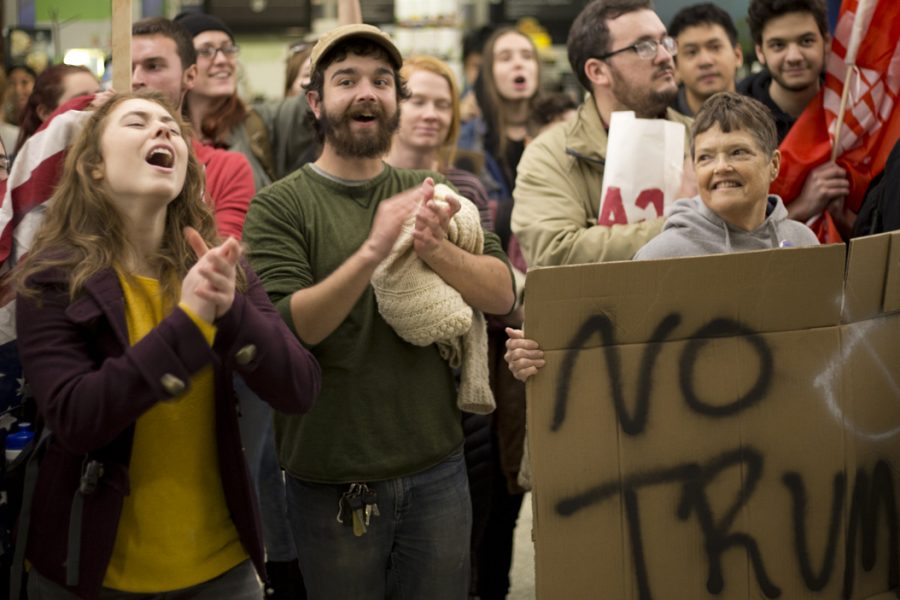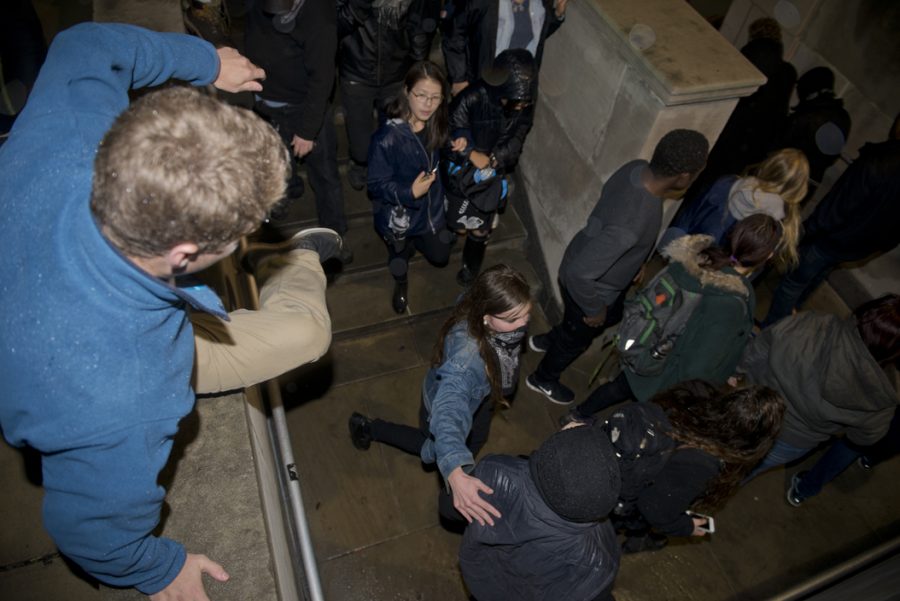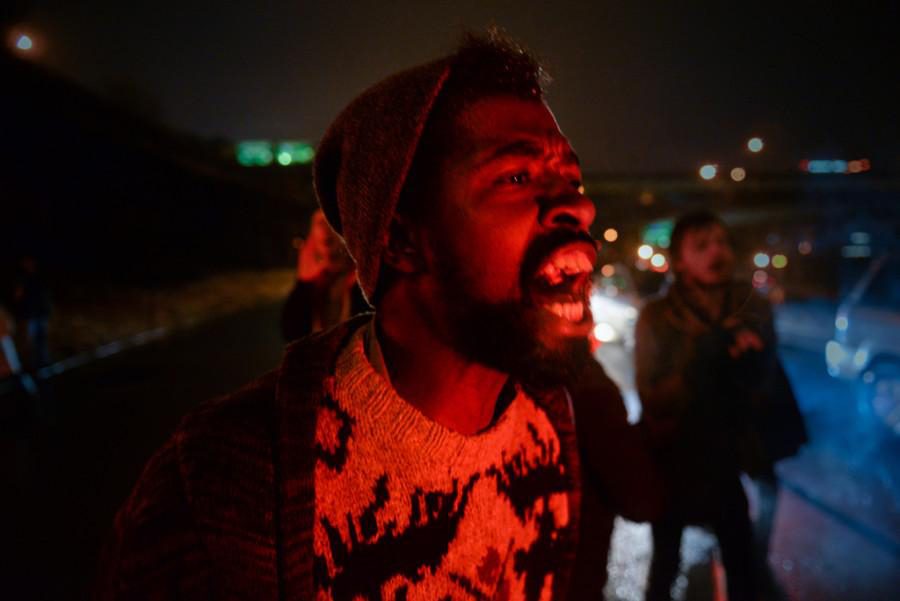Pitt alumnus and Nobel Laureate Wangari Maathai began her work with women in Kenya in 1977. Now, nearly 40 years later, other social change groups are picking up where Maathai left off and using her model as a blueprint.
Maathai founded the Green Belt Movement as part of her vision to empower women in Kenya to conserve their environment and livelihoods.
In its extensive outreach and partnering with other institutions like the United Nations, The Green Belt speaks to what Pitt sociology professor Jackie Smith and many others refer to as the global justice movement, which makes use of local resources to achieve its goals.
The global justice movement unites local organizations together and encourages them to view issues through a wider lens, in order to effect global change by accomplishing local change. The movement also focuses on anchoring larger-scale organizations by connecting them with local partners.
“The longer-term movements have been the global justice movement, which is really a movement of movements,” Smith said. “A lot of those movements, in the past they were focused more on the global arena of the world trade talks and targeting corporations, more recently have been focusing on building local networks and local kinds of movements to promote economic human rights.”
The global justice movement is a network that promotes fair global economics and more just treatment of those marginalized by corporate globalization. Involved groups have acted in opposition to organizations such as the World Bank, the International Monetary Fund and the World Trade Organization to promote fair trade and global economics. A few of its leading groups include La Via Campesina, which supports small scale farming, and Peoples’ Global Action, which promotes social and environmental justice.
Pitt students are following suit by integrating their efforts for social justice into larger-scale movements and staying up-to-date on the activity of similar organizations. Groups like “The Fourth Wave” and Pittsburgh Student Solidarity Coalition encourage their members to look outside the bubble of a college campus, often incorporating social media and all of its benefits and limitations.

Branching out from Pitt’s Campus
Students — such as the members of Pitt’s intersectional feminist magazine, “The Fourth Wave” — are increasingly looking outside of their own social circles for both inspiration and support.
“The Fourth Wave” promotes feminism and countercultural thinking through original weekly written publications and social media. The magazine defines “fourth wave feminism” by the interconnectedness of class, race, religion and ethnicity, along with gender.
Recent Pitt graduate and former managing editor of the magazine Maddie O’Connell said she uses this collaborative system to advocate in her own writing at “The Fourth Wave” for “ecofeminism” and the issue of water accessibility in connection to both environmental and social dimensions, for instance.
The Pittsburgh Student Solidarity Coalition has taken a similar approach and actively utilizes media as a way to keep the organization on track with what’s happening nationwide.
Senior politics and philosophy major Raghav Sharma said the organization has drawn on and modeled itself after various other student strikes such as the Montreal student strikes of 2012, the Indiana University student and faculty 2013 strike and the California occupy movements.
“We don’t even know any of those people. It was just things we had read about, things we had seen in the news… or seen covered through alternative media,” Sharma said.
Although keeping up-to-date on current events and in touch with community members can propel a movement forward, its primary momentum comes from people’s passion for the issue at hand.
In a Black Lives Matter panel discussion held in Posvar Hall at Pitt on Nov. 15, 2016, social rights activist Toyin Agbetu from London, England, argued that when a movement is driven by a strong and legitimate underlying issue, it remains somewhat timeless.
“Even if Black Lives Matter fizzes out, the problem still persists, and there will just be a replacement [movement],” Agbetu concluded.
An advocacy collective at Pitt that emerged in 1968, Black Action Society, knows of this ageless power from its work toward racial equality.
Junior nursing major and President of BAS Aminata Kamara said the organization is “always part of the movement” for racial equality.
“Since the beginning of when we were founded, that’s what we do,” Kamara said. “Even now, it’s not something new to us, it’s just something new to the world again, another cycle. It’s just something that we’ve constantly been preaching.”
BAS is a player in this larger cycle. And the struggle for racial equality has proven its reach through organizations across the country and globe, such as the Black Student Union at Temple University, Black African Coalition at Arizona State and even Afro-Caribbean Society at St. Andrews in Scotland.
O’Connell said that the same goes for feminist movements.
“Even if ‘The Fourth Wave’ as a singular student organization at Pitt doesn’t become nationally recognized, its role is that we’re students that are demanding change…and constantly being critical of patriarchal society, and we’re not the only ones who are doing that,” O’Connell explains.
The feminist magazine at the University of Oregon, “The Siren,” maintains a parallel role to that of “The Fourth Wave.” Senior journalism major and editor-in-chief of the publication, Gabby Urenda, said the publication is one piece of the broader movement toward gender equality. She draws on the Women’s Center and Multicultural Center at the University of Oregon as well as outside sources like “Bitch Media” for different perspectives.
“I look at the community, I look at the bigger picture, and then I look at what people are writing online,” Urenda said. “Having publications where people can voice their opinions on things definitely plays a part in the bigger movement of gender equality.”

Social Movements and Social Media
In addition to reaching within and beyond their local communities, social change groups are increasingly taking to social media to attract new members and inspire change.
Black Lives Matter emerged from the smoke of anger and hurt felt by three California natives after the death of Trayvon Martin. The three decided to put their anger into a hashtag. Just a year later the Twitter sensation mobilized to the streets of Ferguson, Missouri, after the death of Michael Brown.
In using social media as a tool for social change, the movements are faced with a challenge not to become what some refer to as “Clicktivists” — groups or individuals whose support and advocacy online becomes a facade without any real-life action to back it up. Smith is supportive of the outreach and communicative work that can be achieved through the use of social media but argues that it shows a shallow side of the coin as well.
“Social media is kind of a double-edged sword,” Smith said. “It doesn’t take a lot of energy for people to be active on a Facebook page. Sometimes people substitute that online participation with actual participation.”
O’Connell sees social media less as a substitute for actual participation and more as a tool for spreading awareness. Although social media can get the ball rolling for important events, support and participation snowballs when bystanders take note of the event in real life.
O’Connell saw this with the protest held in the streets of Oakland on Nov. 9, the night of the presidential election. Although about 150 people responded to the Facebook event, O’Connell said at least 300 people actually attended.
“It wasn’t because they saw it on Facebook — it was because they heard us yelling outside their dorm room,” O’Connell said. “We still saw a lot of people show up to the event because they just heard us on the streets that way.”
And since the election protest organized in part by “The Fourth Wave,” the magazine has gained new supporters, followers and contributors and is rapidly gaining momentum.
“If anything, what we’re doing is becoming more visible and at least to Pitt students, and I hope that people can turn to us,” O’Connell said.
In addition to using social media as a way to educate others and spread awareness, O’Connell said she uses social media to educate herself as well. O’Connell references various types of literature and documentaries that reflect the magazine’s values, “things that we’ve been consuming that inspire us to keep writing.”
O’Connell uses these sources to educate herself about discrimination and about perspectives that differ from her own, which she said is crucial as a college student constantly surrounded by students of a similar socioeconomic status.
“If I didn’t look to other sources, if I wasn’t on social media reading about different things, if I wasn’t on different online publications reading about things and facilitating that exchange of ideas, then I would have a very different view of the world around me.” O’Connell said. “I think I’d be blinded by a lot of the privileges that come with living on a college campus.”
Inspiring Change from the Bottom Up
The various types of work done by social movements continues on today but have recently been presented with the possibility of becoming emboldened and even stronger against opposition in light of the recent Presidential election outcome.
According to Smith, incorporating the international element of such movements will be a crucial step in moving forward in a political arena which many people presently have anxieties about.
“We will need to both learn from international movements and build alliances with them in order to help communicate what’s going on, [and] learn from other movements that have fought against repressive governments,” Smith says.
Smith, Maathai, O’Connell and Sharma have already decided that the best plan of action from here is to start by taking control of social issues within American society and combine forces to work toward significant and more far-reaching change.
“This is where people live: we live in cities,” Smith says. “So let’s start with cities, then we can change the world going from the bottom up, because it’s not working from the top down.”


